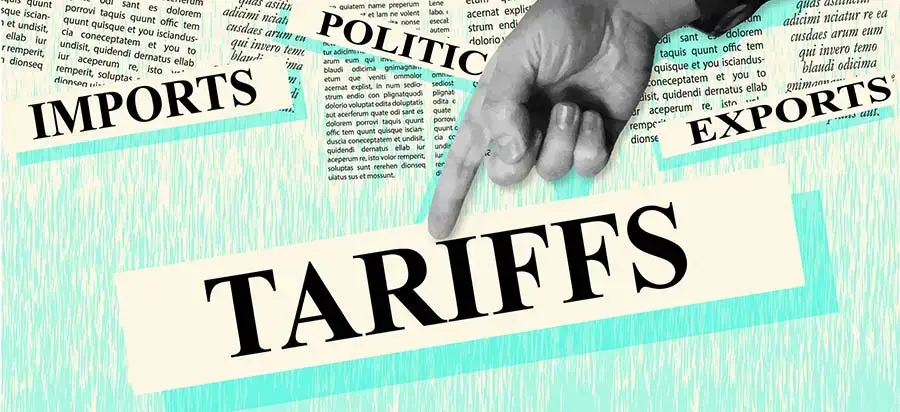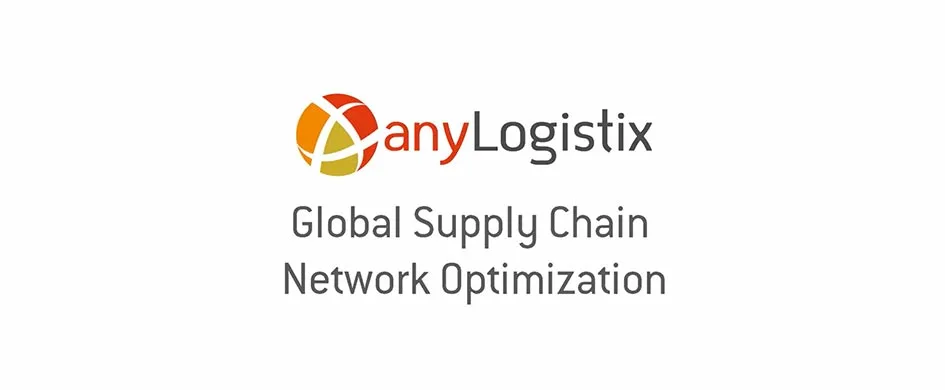Join us online



Did you know that the World Trade Organization (WTO), with its 166 member countries, regulates over 98% of global trade? The WTO sets international trade rules that regulate how supply chain tariffs can be applied to ensure fair trade and influence global economic dynamics. But what exactly are tariffs, and how to calculate them correctly to avoid unnecessary costs?
In this blog post, we'll explore this under-emphasized yet important aspect of international commerce. We’ll then guide you through creating and managing tariffs with anyLogistix supply chain software, which simplifies such complex processes in a way that keeps your supply chain both compliant and competitive.
Contents:
At its core, a tariff is a form of tax imposed by a government on goods and services entering a country from abroad. It is a tool utilized in balancing international trading dynamics. So, understanding how to calculate tariffs is essential for businesses managing global trade.
There are two general categories of supply chain tariffs:
Tariffs in the supply chain are not merely fiscal barriers but strategic tools that can protect local industries, preserve domestic jobs, and adjust a nation’s economic balance against its global competitors.
By making imported items more expensive, tariffs can force buyers to switch to domestic alternatives and make local companies and economies even more powerful. However, the flip side is the possibility of trade battles and increased costs for buyers, so the proper use of tariffs is a key element of economic management.
Recent U.S. tariffs on Mexico, Canada, and China show how easily trade tensions can escalate. While they’re meant to tackle economic issues, they often lead to higher costs, disrupted supply chains, and pushback from other countries. History proves that prolonged trade wars rarely end well, so tariffs need to be used wisely.

Tariffs can make supply chain planning quite complex due to changes in rules and rates. Fortunately, using supply chain software like anyLogistix can make this process simpler and easier.
As tariffs can greatly affect cost structures and decision-making, anyLogistix provides effective tools to help you plan strategically and adapt throughout the supply chain.
Tariffs can make or break the cost-effectiveness of your global operations. They affect the pricing of goods, which in turn influences your entire market strategy. Knowing how to calculate tariffs correctly helps businesses plan ahead, manage costs, and make smarter supply chain decisions.
With changing trade policies and fluctuating tariff rates, having a proactive approach to managing tariffs is important. It helps you react effectively to changing global economic trends, bypassing any dislocations and benefiting from more favorable terms whenever and wherever they arise.
anyLogistix empowers you with the ability to model tariff scenarios and visualize their potential impact on your supply chain. This means you can model changes in supply chain tariffs and immediately understand how these changes could affect your costs and operations.
Using the software, you can test different supply chain configurations against various tariff regimes to discover the most cost-effective setup. Whether it’s rerouting shipments to avoid higher-taxed regions or choosing suppliers from countries with lower tariff barriers, anyLogistix gives you the data-driven insights to make the best decisions.
In anyLogistix, you'll find two types of supply chain tariffs:
Tariffs are specified within the Tariffs table of the software and apply only to network optimization and simulation-based experiments.
Setting up tariff parameters in anyLogistix (click to enlarge)
Let’s explore how to calculate tariffs and manage them in anyLogistix:
Let’s take a look at an abstract example of how a multinational manufacturing company uses anyLogistix to manage tariffs effectively within its global supply chain.
The company, with production facilities in China, makes a range of home and garden products and faces the challenge of distributing these goods worldwide under varying tariff rates.
The products, including lighting and furniture, are shipped to diverse markets in Europe, North America, and Asia, each with different supply chain tariff laws. For instance, lighting faces a 3.70% tariff in Europe but 20.00% in India. These variations significantly impact the cost and require strategic planning to manage effectively.
In anyLogistix, the company models its supply chain to include tariffs in the planning process:
For example, the simulation might show that rerouting shipments through a country with lower tariffs before reaching a higher tariff region could reduce costs. The company uses these insights to tweak its supply chain dynamically, ensuring cost efficiency and compliance with international trade laws.
So, by using anyLogistix for tariff management, the company not only adheres to complex regulatory requirements but also ensures that its supply chain operations are optimized for cost-effectiveness.
To gain a better understanding of this scenario and its setup, you can watch a demo video of this example.

For more detailed information, please refer to Global Network Optimization scenario examples in anyLogistix Help documentation.
Navigating supply chain tariffs doesn't have to be a headache. With anyLogistix, you can tackle the complexities of international tariffs with ease. The software helps you visualize and manage how tariffs affect your supply chain, allowing you to adapt quickly and efficiently. Whether it’s choosing the best shipping routes or adjusting to new regulations, anyLogistix gives you the clarity on different strategies you can implement.
We’re here to keep you informed and in control of your supply chain needs. Got questions or want to share how you've used anyLogistix in your tariff strategies? Join the anyLogistix software users’ group on LinkedIn and drop us a comment there—we'd love to hear from you! Stay tuned for more updates and insights.